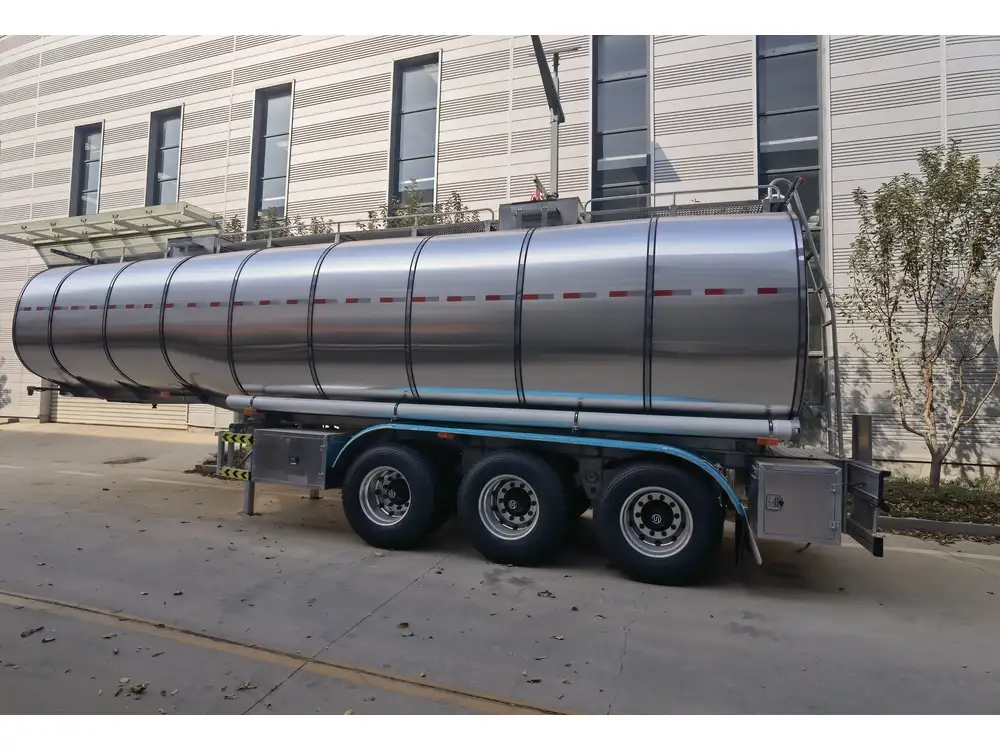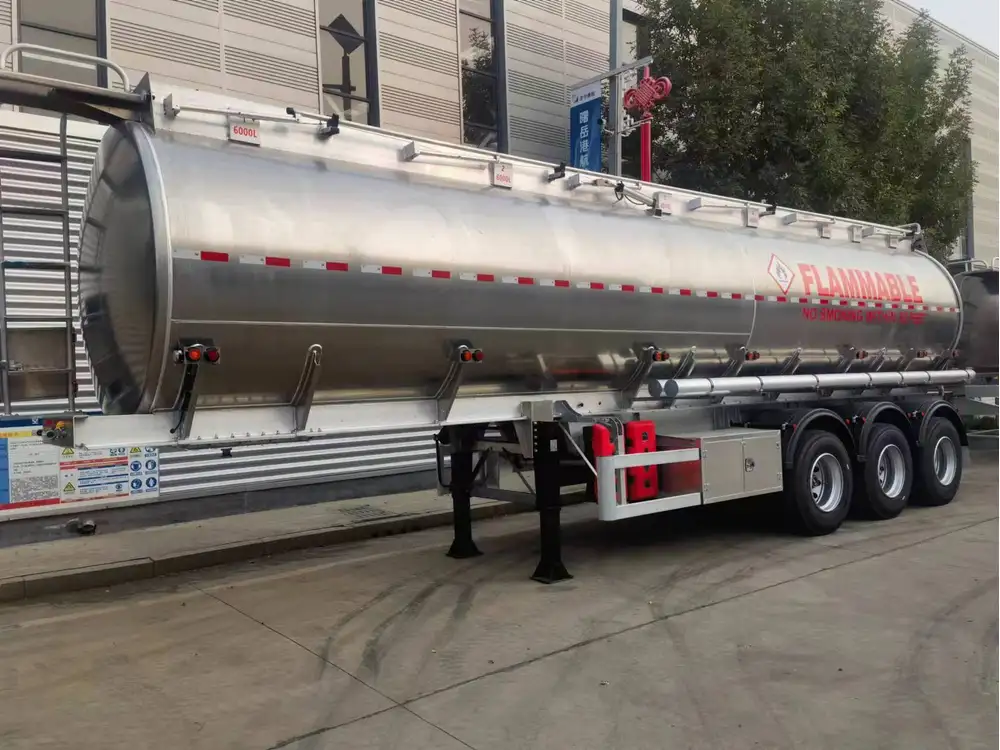Sealing a semi-trailer is crucial for maintaining the integrity of your cargo, as well as ensuring the long-term performance of your vehicle. In this guide, we will explore multiple sealing techniques, types of materials, and practical step-by-step instructions that will help you effectively seal your semi-trailer. Moreover, we will address common issues owners face while sealing and provide solutions that are frequently overlooked but valuable for proper maintenance.
Understanding the Importance of Sealing
Sealing a semi-trailer provides several key benefits:
- Protection from Elements: Preventing rain, snow, and wind from entering the cargo area.
- Security Against Theft: High-quality seals can deter potential thieves.
- Preservation of Cargo Integrity: Ensuring that goods remain undamaged and stored under optimal conditions.
- Reduced Maintenance Costs: A well-sealed trailer will suffer less wear and tear, which translates into reduced long-term expenses.
Key Signs Your Semi-Trailer Needs Sealing
Recognizing when your semi-trailer needs sealing can not only save you money but also safeguard your cargo. Here are some prominent signs to watch for:
| Sign | Description |
|---|---|
| Visible Gaps | Spaces between the trailer body and flooring. |
| Water Damage | Staining or rotting inside the cargo area. |
| Pests or Insects | Signs of infestation indicate compromised seals. |
| Excessive Noise or Vibration | Indicates that seals may have detachment or wear issues. |

Types of Sealing Techniques for Semi-Trailers
There are several methods available for sealing a semi-trailer, each with its own advantages and suitable applications. Here we detail them:
1. Weather Stripping
Weather stripping is the most common method used to seal the doors of a semi-trailer. It consists of rubber or foam materials that prevent air and moisture from entering.
- Advantages: Easy to install, cost-effective, and available in various widths.
- Disadvantages: Tends to degrade over time, especially if exposed to extreme weather conditions.
Application Guide:
- Measure the length of the door frame.
- Purchase weather stripping that fits these measurements.
- Clean the area thoroughly.
- Peel and stick the weather stripping onto the frame, ensuring a snug fit.
2. Sealants and Caulking
Sealants, often in the form of silicone or polyurethane, provide a durable seal that can fill in gaps and cracks.
- Advantages: Provides a waterproof seal, versatile for various applications, and available in many colors.
- Disadvantages: Requires curing time; improper application can result in leaks.
Application Guide:
- Identify cracks or gaps needing attention.
- Clean the surface to remove dirt and grime.
- Apply the sealant evenly using a caulking gun.
- Smoothen the surface with a spatula for a clean finish. Allow to cure as per manufacturer instructions.

3. Foam Insulation
For those seeking a thermal barrier in addition to sealing, foam insulation is an excellent choice.
- Advantages: Offers insulation against temperature changes while sealing.
- Disadvantages: Can take up additional space within the trailer.
Application Guide:
- Measure the areas where insulation is needed.
- Choose foam insulation that fits these dimensions.
- Secure insulation using spray adhesives, ensuring a tight seal against trailer walls.
Step-by-Step Guide to Sealing a Semi-Trailer
Preparation and Tools Required
Before diving into the sealing process, gather the following tools and materials:
Tools:
- Utility knife
- Caulking gun
- Measuring tape
- Cleaning cloths
- Spatula or smoothing tool
- Safety gloves and goggles
Materials:
- Weather stripping
- Sealant (silicone or polyurethane)
- Foam insulation (optional)
- Adhesive spray (if using foam)

Step-by-Step Process
Inspect the Trailer
Conduct a thorough inspection of all seals, doorframes, and structural joins. Take note of areas that need immediate attention.Clean the Surfaces
Use a cleaning solution and cloth to remove dirt and debris from the surfaces to ensure a strong adhesion.Measure and Cut
Carefully measure the lengths of sealant or weather stripping needed. Cut the materials to size, allowing a bit of extra length for proper fitting.Apply Weather Stripping
Start by attaching the weather stripping to the doorframe, ensuring that it is firmly pressed down to eliminate gaps.Fill in Gaps with Sealant
For any observed gaps, apply sealant using a caulking gun. Focus on areas where gaps meet the floor or where the chassis connects.Smooth and Cure
Smooth any excess caulk with your spatula. Allow the sealant to cure as per product instructions before exposing to moisture.Final Inspection
After the work is done, re-inspect for any missed spots or loose materials. Ensure everything is tight and secure.
Common Issues with Sealing and Solutions
Despite diligent work, issues may still arise with seals over time. Here we discuss potential problems and their remedies.
Problem: Mold and Mildew
Description: Excess moisture trapped within creates an environment for mold and mildew growth.
Solution:
- Ensure proper ventilation within the cargo area.
- Utilize moisture-absorbing desiccants to combat humidity.
- Regularly inspect and replace any damaged seals.

Problem: Material Degradation
Description: Rubber seals may wear out or dry out, losing elasticity.
Solution:
- Regularly inspect seals and replace them annually.
- Use quality materials that resist UV exposure and extreme weather.
Problem: Ineffective Insulation
Description: Foam insulation that isn’t sealing effectively may let in drafts or moisture.
Solution:
- Regularly assess foam for any signs of detachment.
- Reapply adhesive or replace the foam where necessary.
Final Thoughts
Sealing a semi-trailer is not merely a maintenance task; it is a pivotal component in the preservation of your cargo, the safety of your investments, and the longevity of your vehicle. By choosing the correct materials and implementing appropriate sealing techniques, you safeguard against the elements while enhancing the overall efficiency of your operations.
Engagement Tip: If you’re in the industry, sharing your experiences or best practices regarding sealing can help foster community knowledge. Do engage with others about their preferred sealing techniques, and join forums or groups that discuss transportation solutions for further insights.

Additional Resources
Lastly, consider diving deeper into related topics:
- Best Products for Weather Sealing: A Comparative Review
- Understanding the Effects of Temperature on Cargo Safety
- Top 5 Maintenance Practices for Fleet Operations
These additional resources can enhance your knowledge and ensure your semi-trailer continues to perform optimally for years to come.



